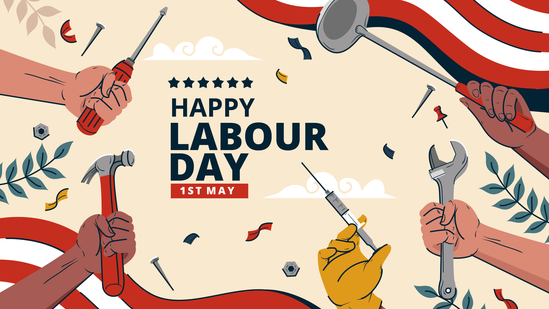
Table of Contents
- Introduction: A New Kind of Worker
- Labour Day: Then and Now
- What Is the Gig Economy?
- Freedom vs. Fragility: The Gig Worker’s Reality
- Where Labour Rights Fall Short
- Reimagining Protections for the Gig Generation
- Global Trends and Indian Realities
- What Labour Day Should Inspire Today
- Conclusion: Honour All Work, Old and New
1. Introduction: A New Kind of Worker
Every May 1st, we pause to honour labourers—the hands and minds that keep the world moving. But in today’s world, not every worker clocks in at 9 or wears a uniform. Some log in. Some swipe right to accept a task. Some hustle between gigs with no desk or boss in sight.
The rise of the gig economy has reshaped work. So what does Labour Day mean in this digital, on-demand world?
2. Labour Day: Then and Now
Labour Day has its roots in a fierce fight for worker protections: the eight-hour workday, safe conditions, fair pay. It began with factories and unions, with collective voices demanding change.
Fast forward to now: workers still fight for dignity—but in a different battlefield. Apps instead of assembly lines. Freelance contracts instead of factory floors.
3. What Is the Gig Economy?
The gig economy refers to a labour market built on short-term contracts, freelance jobs, and temporary roles. Think:
- Ride-share drivers
- Food delivery agents
- Freelance designers, writers, coders
- Online tutors and virtual assistants
They work with freedom, yes—but often without security.
4. Freedom vs. Fragility: The Gig Worker’s Reality
Gig work is flexible. You can be your own boss. Choose your projects. Set your hours.
But here’s the fine print:
- No health insurance
- No paid leave
- No job security
- No grievance mechanism
For many, it’s not freedom—it’s fragility. When the app shuts down or the demand drops, there’s no safety net.
5. Where Labour Rights Fall Short
Traditional labour laws were designed for traditional jobs. But gig workers fall through the cracks:
- They’re often classified as “independent contractors”
- This excludes them from minimum wage laws, PF, ESIC, and maternity benefits
- There’s no system to resolve disputes or ensure fair rating systems
In short, they work like employees—but are protected like none.
6. Reimagining Protections for the Gig Generation
It’s time to rethink what worker protection means:
- Portable benefits that move with the worker
- Fair algorithms that don’t punish without explanation
- Gig unions or digital collectives for negotiating better terms
- Social security contributions from platforms, not just workers
Labour Day must evolve to honour all labour—including those working job to job, task to task.
7. Global Trends and Indian Realities
Countries are beginning to act:
- UK: Courts ruled some gig workers are entitled to minimum wage and holiday pay
- Spain: Declared gig riders as employees, not freelancers
- India: Code on Social Security, 2020, mentions gig and platform workers—but enforcement remains distant
India’s gig workforce is huge, yet protection remains paper-deep. As the sector grows, so must the systems around it.
8. What Labour Day Should Inspire Today
This Labour Day, reflection must extend beyond factory gates. We must ask:
- Who builds our lives silently, without a fixed salary or health cover?
- Who makes our convenience possible while struggling with instability?
Celebrating Labour Day today means recognising invisible labour—and demanding visible rights.
9. Conclusion: Honour All Work, Old and New
Labour Day has always stood for fairness, respect, and human dignity at work. That mission doesn’t end with full-time jobs.
In this evolving world of work, every rider, coder, writer, and delivery agent deserves the same protection and pride once fought for in mines and mills.
The tools of work may have changed. But the values must remain the same.
